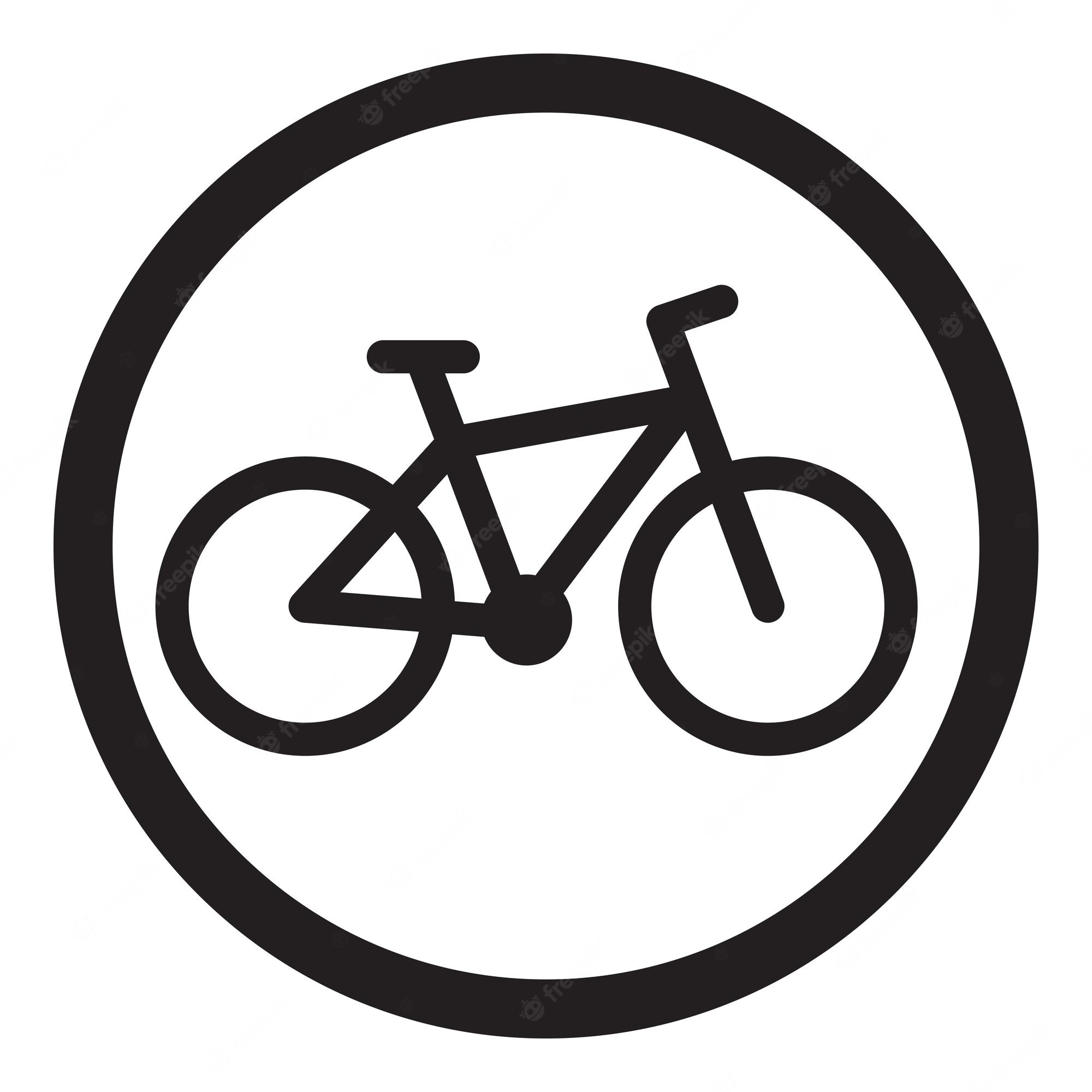And those jurisdictions are what is colloquially known as “stupid”.
It’s hard not to see this as ignorance given how easy it is to look up the great safety record of these laws (i.e. right there on the Wikipedia page).
https://en.m.wikipedia.org/wiki/Idaho_stop
See the section on safety. It’s safer for bicycles to yield at stop signs instead of come to a complete stop. The most dangerous part of cycling is in an intersection, and you’ll spend more time in them when coming to a complete stop every time
Have you decided to change your opinion yet, since you’ve had plenty of time to read about and fix your own “stupid” though?
As a cyclist, I’ve seen more motorists blow through stop signs than other cyclists, and they are the ones who can kill someone.
Idaho Stops need to come to Canada. Not only have they been proven to be safer, but it makes sense in a dozen different ways.
I’ve sat at red lights (as a cyclist) and the light DOES NOT CHANGE unless a car is waiting at that same light. We’re talking 10+ minutes. Who the hell thinks it’s OK for cyclists to have to sit there indefinitely when no other cars are around, just because of some outdated laws? We need to change with the times!
As a cyclist, I’ve seen more motorists blow through stop signs than other cyclists, and they are the ones who can kill someone.
Cyclists always try to use this defense/whataboutism way too often, without realizing that to a pedestrian, you on your bike are just as deadly as a car. Motorists are at least expected to know the rules of the road, cyclists openly oppose any sort of education and even act offended at the idea that they too should know the rules of the road they’re on. As a pedestrian in Toronto, cyclists are my biggest danger, not motorists.
without realizing that to a pedestrian, you on your bike are just as deadly as a car.
Statistically, that’s not true. A car at any speed can kill a pedestrian or cyclist. For a cyclist to kill a pedestrian, which is exceedingly rare, it would take a lot of speed and bad luck to result in a fatality. I don’t think I’ve ever even heard of a cyclist killing a pedestrian at a stop sign.
But to be clear, I don’t advocate for cyclists blowing through stops when there are pedestrians around, since that’s obviously not obeying the right of way. I aim to be a defensive and respectful rider when I’m on my bike.
But I would still like to see more enforcement of stop rules being applied to motorists (and not cyclists on empty roads), since they really are responsible for the vast majority of catastrophic injury and death for pedestrians and cyclists.
At the same time, we can’t ignore that far too many pedestrians put themselves at risk, so everyone has some personal responsibility here.
Everyone keeps talking about how bikes can’t hurt pedestrians, meanwhile my wife’s aunt has permanent brain damage cause she got hit by a cyclist.
I’m really sorry to hear that.
Bikes CAN hurt pedestrians, but it’s statistically rare compared to injuries/death caused by cars. E-bikes increase the risk significantly, though.
It also illustrates that proper infrastructure is needed, since an accident like that shouldn’t even happen. In some areas around here, we have split trails, which separate (by several meters and bushes) cyclists and pedestrians.
However, there are often pedestrians strolling on the cyclist side, or cyclists on the pedestrian side, and that’s just dangerous for everyone. I honestly don’t know why simple routes are so difficult for some people to follow.
As a Torontonian cyclist, according to what I see, we blow through stop signs way more than cars. Way more. Of course physically we can mostly just harm ourselves.
But yes the rules of the road have to change in this regard. The status quo is clearly car-friendly. Not only it doesn’t prioritize cyclists, but it doesn’t prioritize pedestrians either.
BTW, ebikes help negotiating the status quo a lot. They make stopping at stop signs trivial, as well as keeping a safe speed when riding where there’s no bike lanes.
I’m east of the city, and we don’t have nearly the same amount of cyclists as you do, but only very few ever cautiously ride through a stop sign. I won’t lie, but I did see quite a few cyclists going through stop signs when I was in the city last weekend… not putting anyone in danger, just to save time.
I thought I read about a protest in Toronto where cyclists were stopping at EVERY stop sign as a large group, backing up traffic in an act of malicious compliance. I’d be totally down for that if crazy motorists didn’t turn their rage onto me, rather than onto these outdated rules.
I agree that e-bikes can level the playing field, but the general public shouldn’t need to have a powered bike to have fair rules, either.
That protest sounds amazing. Motorists can’t actively rage at a large group of cyclists. 🤭
Yes, ebikes shouldn’t be needed by everyone to cycle safely. The rules are bad and so is the infrastructure.
Ohio allows this. If the red doesn’t detect your bike it you can treat it as a yield
Stop signs should be treated as “yield” and red lights should be treated as “stop”.
Cars and bicycles are two completely different things, and should have different rules governing them. A car is larger, deadlier, and takes longer to stop than a bicycle. A car going 40-50 kph is traveling with far more force, and won’t be able to stop as fast as a bicycle traveling 20 kph.
It’s like saying cars and planes should follow the same rules. Or even better, cars and semi trucks. There are highway speed signs that state one speed for trucks and one for everyone else. Or certain roads where trucks aren’t allowed to drive on. We already have a tiered approach to motor vehicles, it should extend to bikes as well. Blanket approaches don’t work in our modern world when we have cars, bikes, ebikes, escooters, etc all sharing the same space.
A lot of cyclists also get hit by blowing stop signs. I have seen too many people who just zip through without looking.
People driving cars should absolutely be cautious, don’t get me wrong on that. That being said, right-of-way won’t matter much if you’re dead. All it takes is one ahole not paying attention while driving and it’s game over for the cyclist. You could also use your argument for pedestrians to cross wherever and whenever they want. Pedestrians won’t kill someone like a car would either, but they are also still at risk.
I don’t know, I’ve just never understood taking that risk over saving a short amount of time. I have genuinely seen some people who have made me wonder how they survived so long.
I agree that the Idaho Stop should be implemented in more places, though. I’m pro-yeild, and anti-blowing stop signs for everyone.
ya, all my close calls cycling were from other bikes and powered scooters blowing stop signs. we need proper respect for right of way.
Yes I agree also, blowing through stop signs is terrible regardless of method of transportation. I should have been more clear in my advocating for Idaho stops earlier.
Cars and bicycles share the same travel surface. In order to interact safely, they need to follow the same rules. Using your example, semis still need to follow nearly all the same rules as cars. There is a base ruleset for everyone who uses a roadway (including, one must come to a complete stop at a traffic control device that directs them to do so), and only specific modifications to certain rules for additional safety for vehicles in certain classes.
Here in Saskatchewan, bicycles fall under the Traffic Safety Act if they are on public roadways. That means they can be ticketed for exceeding speed limits or disobeying traffic control devices.
If different modes interact on the same travelway, they must share the same set of rules. If they don’t, you get conflicts, which means collision between vehicles, pedestrians, bicycles, and other wheeled modes of travel.
Defos. Doesn’t matter what you’re driving, be predictable and you won’t get hurt.
Considering how much stop signs are overused in North America, this is unreasonable. Either replace many stop signs with yield signs where safe to do so, or allow cyclists to pass through stop signs as if it they were yield signs. Holding momentum is important for cyclists.
Noooooo.
They have those in France and it’s so dangerous! There are so many collisions that happen because of the right of way at intersections.
I’ve driven there and it’s freaking scary.
I think most European countries are designed this way. In my experience it just takes getting used to and is a bit uncomfortable, but it just feels so much more efficient, whether driving or on a bike. It feels unnecessary to have to stop at every block on a neighborhood street when there’s no one around.
While true, in the status quo, blowing through stop signs when other users have the right of way increases the probability of accidents. It puts the responsibility squarely in the person that has to decided whether to stop or not. The one that doesn’t have to stop is simply going their way. If there’s a monetary lapse of judgement on the cyclist’s side, they become a pancake. I’m staying this as someone who regularly “Idaho-maneuvers” in certain places.
Except that data from states which permit Idaho Stops (i.e. treating a stop sign as a yield, and a stop light as a stop sign) has not shown any increase in cyclist danger. The inverse is true, which is why Idaho Stops have been expanding into other states.
Do the drivers in Indaho know that cyclists are expected to be treating stop signs as yield? My guess is yes. That could be making a difference in the safety profile.
Idaho, Delaware, Arkansas, Oregon, Washington, Utah, North Dakota, Oklahoma, Colorado, Washington, DC, and Minnesota :)
I don’t know what motorists know or don’t know, but why would that make a difference?
An Idaho stop has to do with cyclists not having to needlessly wait at stop signs or red lights, so drivers don’t really have to think about it, since they likely won’t even be at those same intersections where an Idaho Stop is used. It **decriminalizes ** inefficient, dangerous, nonsensical stops for cyclists.
Exactly.
The only interaction with cars is if a cyclist and car arrive at the intersection at the same time, the cyclist gets priority. That’s it. And most of the time when I stop at an intersection, the other car waves me through anyway (which is super annoying because it changes the normal flow).
If cars are respecting stop signs, there’s literally no conflict.
From safety point of view, none of this is important for when everyone follows the rules. If everyone follows the rules people won’t get hurt both in the status quo and under a stop-as-yield regime.
I think the interesting questions lie in the grey area when not everyone follows the rules because that’s the reality.
What if it’s not a 4-way stop but a 2-way stop where the driver has the right of way? In the stop-is-a-stop status quo, their expectation is that they can drive at a constant speed on such a road, without having to prepare for emergency braking at every intersection. In a stop-as-yield regime the driver should have the expectation that cyclists might make a mistake and show up from some intersection. Assuming a constant rate of errors from cyclists, I’d expect to see a decrease in injuries in such cases. 🤷
Maybe?
Research shows that stop as yield doesn’t increase cycling incidents (see states in the US where it’s the law). The law only impacts those who follow it, and the harder/more annoying it is to follow the law (starting is hard on a bicycle), the less likely people are to follow it. For example, I see people jaywalking all the time in my area because crosswalks are rare, and jaywalking is rare downtown where there are plenty of crosswalks. So I think stop as yield has a very good chance of being a net positive.
At least I’m my area, drivers don’t seem to be aware of the stop as yield law despite it being the law here, so I don’t think we should expect much change in driving behavior.
If you’re gonna ride your bicycle on the road, you better stop at a stop sign. Don’t be an idiot.
I mean, I always yield at stop signs, but I am not likely to come to a complete stop on a bike if there is nobody to yield to. Many car drivers don’t either, as any road user is already aware.
“Oh they’re doing it so I can do it to,” said the pile of bones and guts spread out along the intersection.
Cars have a little more protection than a bicyclist for the occupants of the vehicle.
If anything, the fact that cars are more likely to injure another road user than their occupants, is even more reason that they should come to a complete stop, moreso than any other road user.
The rules and laws around using roads are designed without consideration for the type of vehicle using it. Everyone needs to stop at stop signs and red lights.
The rules and laws around using roads are designed without consideration for the type of vehicle using it.
That’s demonstrably false. Bikes are treated differently from cars in many regards. See: bike lanes, green “bike boxes” at intersections, rules for passing, highway access, etc. Why not the “Idaho stop”?
The “Idaho stop” (red as stop, stop as yield for cyclists) is a thing in several jurisdictions, and research shows it is as safe or safer that way.
Still ought to follow the laws, but there’s reason to want those laws to be different.
meanwhile 4,000 lb vehicles run stop signs in front of fucking daycares in my neighbourhood
Nobody should run them. Contact your municipality to increase enforcement until the community gets the message.
Everyone stops at a stop sign. Cars, buses, pedestrians, motorized wheelchairs, and bikes. This is not an issue that needs separate rules for cyclists. Perhaps they can re-evaluate that intersection, does it need a sign? If cyclists can easily coast through the intersection, the need for a stop sign is up for discussion. Perhaps a Yield sign.
My area has lights for intersections with more than 2 lanes per direction of travel, roundabouts for smaller busy roads, and most of the residential intersections don’t have signage. Stop signs are, mostly, used to slow traffic down.
I disagree. The Idaho stop is a very real law and it’s been proven safe. There absolutely should be a different rule for cyclists and we already have decades of proof that it not only works but increases safety.
Also, pedestrians don’t stop at stop signs currently. It’s perfectly legal for them to continue without any kind of stop and I’m not aware of any place on earth that requires pedestrians to stop or has ever given a ticket for the them failing to stop.
I understand the need to obey traffic laws on a bicycle, but treating them the same as a 2+ ton projectile that can turn humans into meat paste or cause tens of thousands of dollars in damage to a structure in seconds by effortlessly adjusting your right ankle by 25° is absurd.
Fines should be proportional to the potential damage of the Infraction.
It’s not about if the cyclist hit something, it’s about the possibility of something hitting the bicyclist.
If a car, following the law, took its right of way through the intersection and hit a cyclist who wasn’t following the law… Well it’s fine to say the cyclist was at fault, but he’s still been hit by a car.
Traffic laws are there to protect everyone from each other.
Except, as others have pointed out in this discussion, it’s actually safer to let cyclists use stop signs as yield signs.
This is inherently the problem with (most) cyclists, and why motorists in general don’t like them.
They want it both ways. They want to be a pedestrian when it suits them, when they want to blow stop signs, jump up onto the sidewalk, expect cars to stop for them at crosswalks, and weave through traffic at will. But they ALSO want to be a vehicle when it suits them, when they are sharing a road that doesn’t have a bike lane, for example.
And they seem to think that the motorist should just KNOW when they are being one or the other.
It’s frustrating and annoying. They are a vehicle. They are governed as a vehicle. Suck it up, cyclists.
I find it so tiresome hearing about how cyclists are supposedly more entitled than motorists (or the other way around, since cyclists say the same things about drivers).
Drivers routinely roll through stops, jockey for position, move erratically or dangerously, block crosswalks or bike lanes, distract themselves on their phones, get upset when mildly inconvenienced by having to underspeed behind a cyclist taking the lane for safety, etc.
-
Being entitled and breaking the law to get places faster is universal; I think uou’re just acclimated to drivers doing it.
-
The infrastructure is so car-oriented and bike-hostile that following the law often disadvantages cyclists or puts them at risk. That doesn’t justify, say, biking fast across a crosswalk, but sidewalk-riding on a 4-lane road without bike lanes? IMO it does.
-
There’s bias here in treating the worst cyclist behaviour as being something condoned by cyclists at large. Kind of like if someone said “drivers just want to drag race around town”.
-
It goes the other way too, when a cyclist is considering stop sign as a yield then motorist complains that cyclist should behave the same way as cars.
When cyclist behave are riding in the middle of the road because it’s safer for them then motorist complains that they are not supposed to be there.
No, motorists don’t like them because they are different. That’s it. It’s someone they can place their road rage on.
If that were true, you’d expect car drivers to feel the same way about, for example, motorcycles, rollerbladers, and longboarders… Yet people don’t have the same feelings as they do with cyclists.
Also since when do car drivers have any problem whatsoever applying their road rage to other car drivers? Lol.
Nah, drivers rarely go on the internet to rage about other drivers blowing stop signs, speeding, tailgating, running red lights, or other idiotic things. Cyclists bring out waaaay more emotions in people than other drivers. Just read any cycling thread…like this one.
The thing is if you’re going to be sharing the road with other vehicles, you need to ride predictably and communicate with other drivers/riders or you’re just more likely to get yourself killed. Deciding to ignore a Stop sign is not predictable behaviour.







